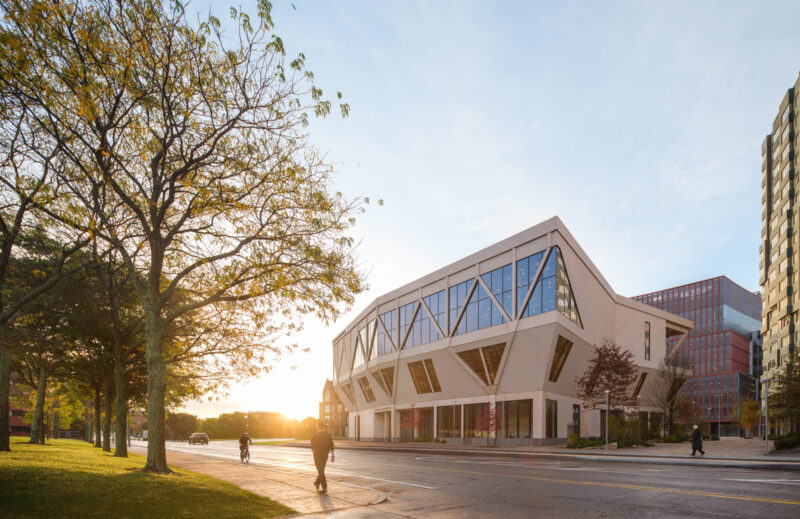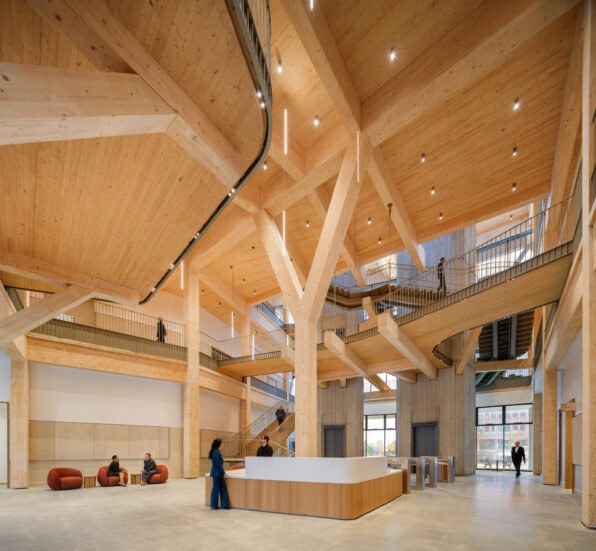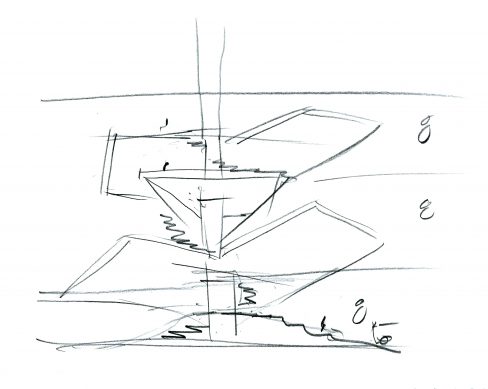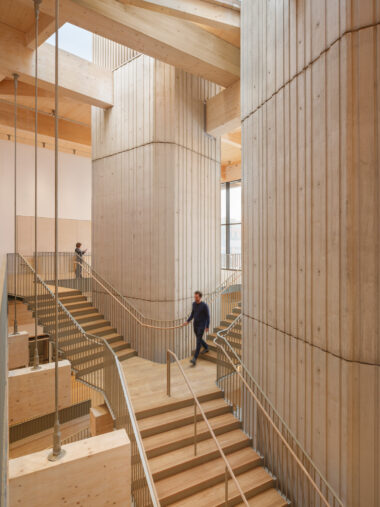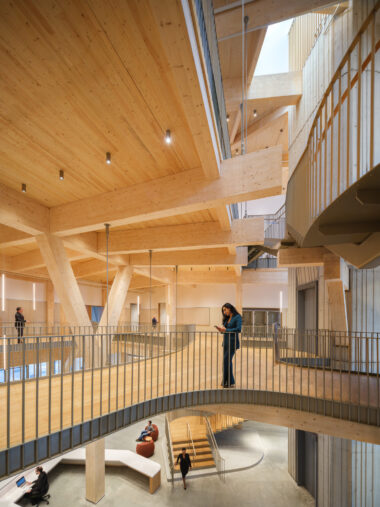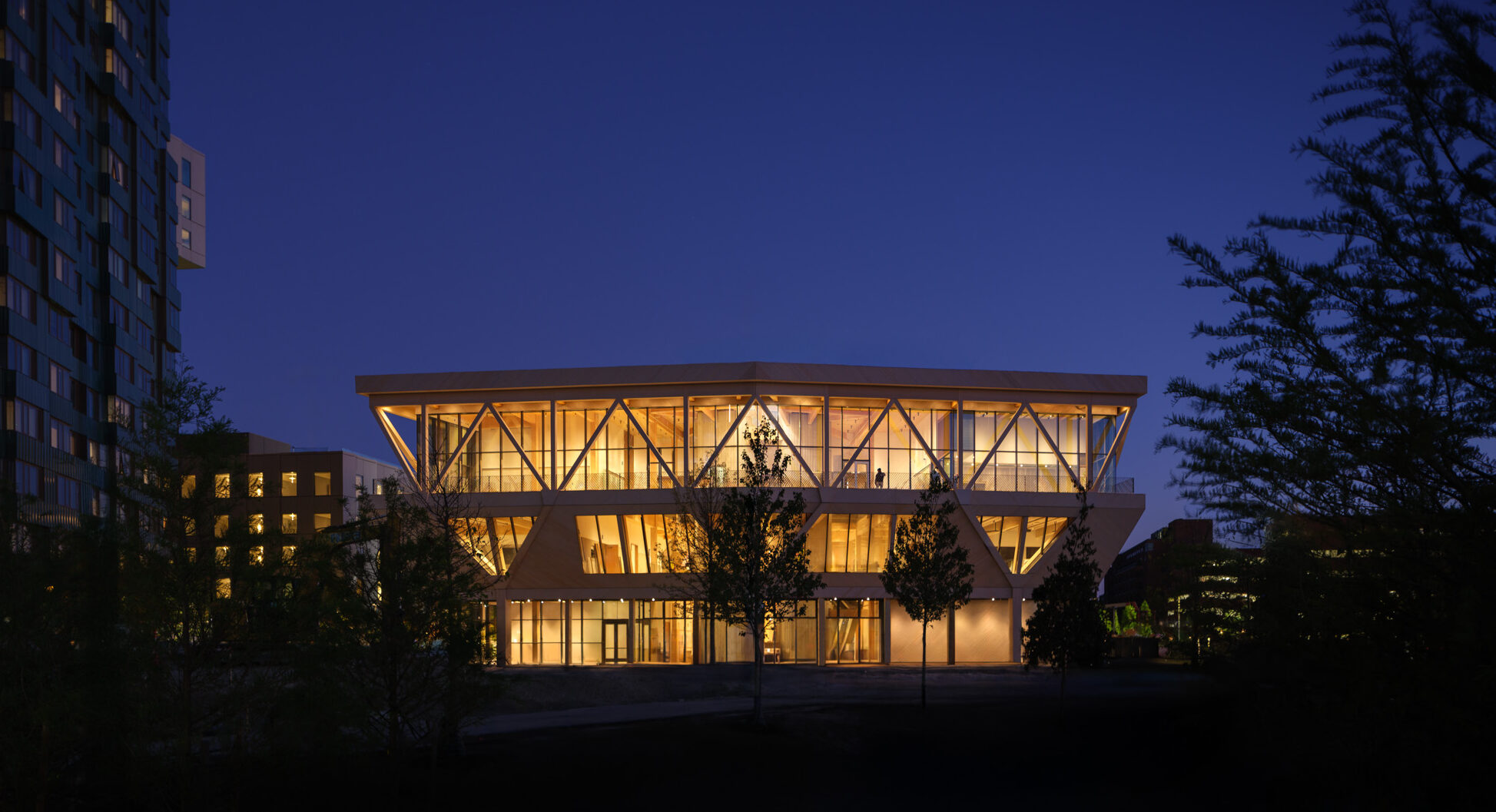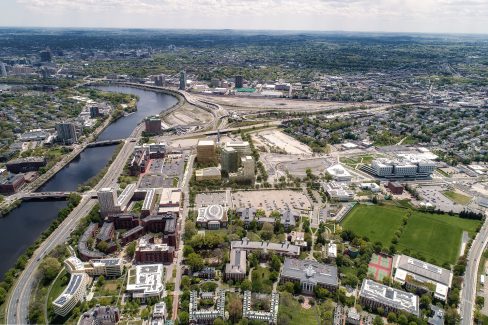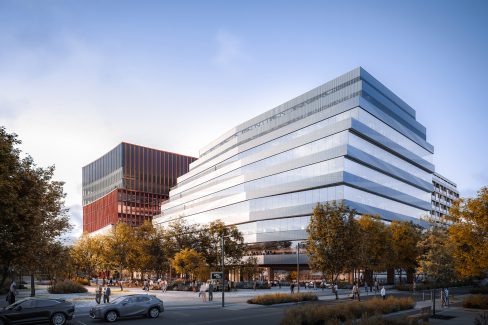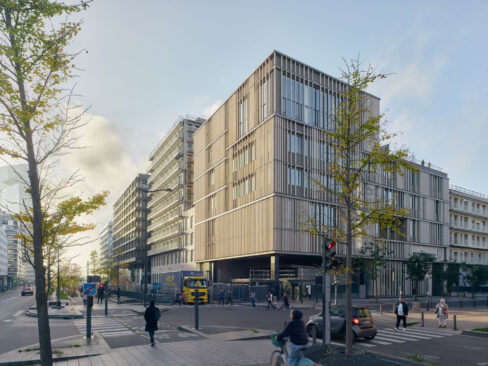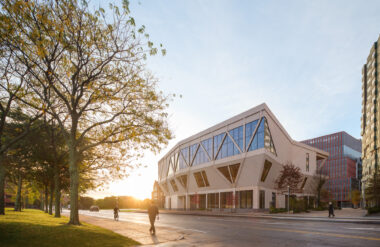David Rubenstein Treehouse at Harvard University
Location
Boston, MA
Status
Completed 2025
Owner/Operator
Harvard University
Type
Educational, Conference Center
Size
55,000 sf
Sustainability
Targeting Living Building Challenge: Core Green Building Certification and Materials Petal
Tags
Conference facilities are often insular buildings that feel disconnected from their surroundings. The David Rubenstein Treehouse establishes a very different kind of hub for convening at Harvard University: a welcoming destination that energizes conversation and collaboration, and embraces its outdoor environment and surrounding neighborhood. With its expressive structure of mass timber and innovative low-carbon concrete, both firsts for Harvard’s campus, the Rubenstein Treehouse also visibly models a more sustainable and healthier way of building for Boston and institutions worldwide.
Part of the first phase of Harvard’s Enterprise Research Campus, the Rubenstein Treehouse provides dedicated event space and meeting amenities for Harvard affiliates, the community, academia, and industry and business leaders from around the globe. The design’s carved form opens up a variety of shaded outdoor gathering areas on multiple sides to extend the campus’ public realm. Three ground level entrances connect to a double-height atrium, welcoming visitors and allowing them to seamlessly flow through the building to the surrounding campus. The atrium spills outward onto two covered porches (loggia) that can be enjoyed throughout the year.
The building’s two upper floors support meetings and events. Evoking the wonder and excitement of climbing up into a treehouse, a central stair—lit by skylights from above—wraps around two free-standing elevators, immersing guests in the natural warmth of the building’s mass timber structure. Branching outward like a tree to support the main conference space, the Canopy Hall, the building’s columns frame great views of the surrounding treetops and the campus and city beyond.
The building’s exposed structure, from the concrete that uses ground glass pozzolan (as a low-embodied carbon cement replacement) to the sustainably harvested mass timber expressed inside and on the facade, reinforces the Rubenstein Treehouse’s identity as a hub for innovation. Informal spaces that encourage convening and interaction are designed into every floor, such as the level-two “perch” overlooking the atrium, and the level-three pre-function area that connects to a long, open-air terrace—giving visitors the feeling of being “up in the canopy.”
Early, coordinated commitment to Harvard’s ambitious climate action and healthier materials goals, as well as Living Building Challenge certifications, has set a precedent for future campus projects. Additional energy and carbon reduction strategies include a high-performance façade, ample natural light, rooftop PV panels, and heating and cooling systems connected to the campus-wide district energy facility. A raised floor efficiently conditions the interior while concealing major building systems.
Creating a vibrant and engaging environment year-round, the biodiverse landscape also offers attractive habitat for wildlife, and its bioswales work in combination with a rooftop collection system to retain and reuse rainwater. In the project’s efforts to make the best use of earth’s resources—including sharing the joyful feeling of inhabiting the treetops—the Rubenstein Treehouse convenes a future that reaches well beyond its site.
Project Team
Tishman Speyer, Fee Developer
SCAPE, Landscape Architect
Arup, Structural Engineer
Perkins + Will, Harvard Office for Sustainability, and Arup, Sustainability Consultants
Arup, MEP/FP Engineer
Nitsch Engineering, Civil Engineer
Haley & Aldrich, Geotechnical Engineer
Code Red Consultants, Accessibility/Code
Front, Envelope
Simpson Gumpertz & Heger, Waterproofing Consultant
Tillotson Design Associates, George Sexton Associates, Lighting
Arup, Acoustics, Audio Visual, Information & Communications Technology
Once-Future Office, Identity, Signage, and Wayfinding
Edgett Williams Consulting Group, Vertical Transportation Consultant
Ricca Design Studios, Food Service Consultant
Kleinfelder, Logistics & Waste Management Consultant
Lerch Bates, Façade Access
Vermeulens, Cost Estimator
Consigli and Smoot Construction, Contractor
Related
Studio Gang Completes the David Rubenstein Treehouse at Harvard University
Harvard’s first mass timber building to serve as a model for high-performance, low-carbon architecture in Boston and institutions worldwide.
Harvard News — "Tishman Speyer to develop first phase of Enterprise Research Campus in Allston"
“Capturing the spirit of innovation of the Enterprise Research Campus, our design will transform a former industrial site into a fertile new ground for the exchange of ideas and creative expression.” — Jeanne Gang
